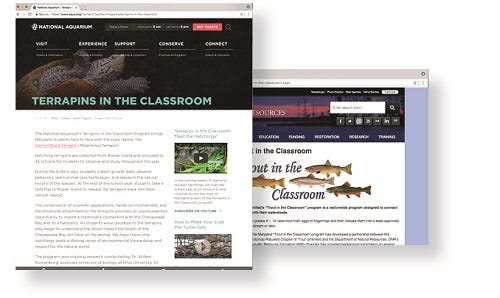Toolkit: Conservationist and Teacher Lolita Kiorpes
A Charles County classroom celebrates science and environmentalism

“North Point High School is the first Ocean Guardian School in Maryland and has earned four Guardian banners. I’m on my fifth consecutive Ocean Guardian School grant which has given my students and me the ability to participate in a variety of environmental and sustainable activities.” — Lolita Kiorpes Science teacher at North Point High School, Charles County

TERRAPINS/TROUT IN THE CLASSROOM I really love these Maryland DNR programs. Having animals to care for in the classroom teaches responsibility, the circle of life, conservation, and our connectedness.

COOL IT CARDS Students need to know about the issues surrounding climate change and ways to mitigate and lessen the negative effects. This creative card set gives authentic facts on climate change without alarming students.

WATER TESTING KIT Students use several different types of water quality test kits to determine the quality and health of water sources in our local watershed.
The use of test kits gives students skills in precision, technology, analyzing and comparing data, and an important understanding of ecological balance.

OCEAN GUARDIANS SCHOOL
This banner represents awareness of our fragile ecosystems, celebrates Ocean Guardian Schools and National Marine Sanctuaries, and showcases students working together with community members to protect our watersheds and oceans.

HORSESHOE CRAB I love how students are drawn to the gentle horseshoe crab and its importance. Older than dinosaurs, their blue blood contains a clotting agent which detects endotoxins.
The FDA requires using this agent to test all injectable and intravenous drugs produced in the US.

UNDERSTANDING WILDLIFE AND POLLINATORS Students are amazed at what there is to learn about bees. This guide includes photos, planting recommendations, and a summary of bee toxicities that assists students in their research. I appreciate the information, the close-up pictures of different types of bees, and how easy it is to use these guides.

